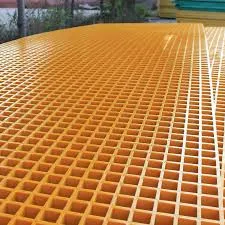
-
 Afrikaans
Afrikaans -
 Albanian
Albanian -
 Amharic
Amharic -
 Arabic
Arabic -
 Armenian
Armenian -
 Azerbaijani
Azerbaijani -
 Basque
Basque -
 Belarusian
Belarusian -
 Bengali
Bengali -
 Bosnian
Bosnian -
 Bulgarian
Bulgarian -
 Catalan
Catalan -
 Cebuano
Cebuano -
 China
China -
 China (Taiwan)
China (Taiwan) -
 Corsican
Corsican -
 Croatian
Croatian -
 Czech
Czech -
 Danish
Danish -
 Dutch
Dutch -
 English
English -
 Esperanto
Esperanto -
 Estonian
Estonian -
 Finnish
Finnish -
 French
French -
 Frisian
Frisian -
 Galician
Galician -
 Georgian
Georgian -
 German
German -
 Greek
Greek -
 Gujarati
Gujarati -
 Haitian Creole
Haitian Creole -
 hausa
hausa -
 hawaiian
hawaiian -
 Hebrew
Hebrew -
 Hindi
Hindi -
 Miao
Miao -
 Hungarian
Hungarian -
 Icelandic
Icelandic -
 igbo
igbo -
 Indonesian
Indonesian -
 irish
irish -
 Italian
Italian -
 Japanese
Japanese -
 Javanese
Javanese -
 Kannada
Kannada -
 kazakh
kazakh -
 Khmer
Khmer -
 Rwandese
Rwandese -
 Korean
Korean -
 Kurdish
Kurdish -
 Kyrgyz
Kyrgyz -
 Lao
Lao -
 Latin
Latin -
 Latvian
Latvian -
 Lithuanian
Lithuanian -
 Luxembourgish
Luxembourgish -
 Macedonian
Macedonian -
 Malgashi
Malgashi -
 Malay
Malay -
 Malayalam
Malayalam -
 Maltese
Maltese -
 Maori
Maori -
 Marathi
Marathi -
 Mongolian
Mongolian -
 Myanmar
Myanmar -
 Nepali
Nepali -
 Norwegian
Norwegian -
 Norwegian
Norwegian -
 Occitan
Occitan -
 Pashto
Pashto -
 Persian
Persian -
 Polish
Polish -
 Portuguese
Portuguese -
 Punjabi
Punjabi -
 Romanian
Romanian -
 Russian
Russian -
 Samoan
Samoan -
 Scottish Gaelic
Scottish Gaelic -
 Serbian
Serbian -
 Sesotho
Sesotho -
 Shona
Shona -
 Sindhi
Sindhi -
 Sinhala
Sinhala -
 Slovak
Slovak -
 Slovenian
Slovenian -
 Somali
Somali -
 Spanish
Spanish -
 Sundanese
Sundanese -
 Swahili
Swahili -
 Swedish
Swedish -
 Tagalog
Tagalog -
 Tajik
Tajik -
 Tamil
Tamil -
 Tatar
Tatar -
 Telugu
Telugu -
 Thai
Thai -
 Turkish
Turkish -
 Turkmen
Turkmen -
 Ukrainian
Ukrainian -
 Urdu
Urdu -
 Uighur
Uighur -
 Uzbek
Uzbek -
 Vietnamese
Vietnamese -
 Welsh
Welsh -
 Bantu
Bantu -
 Yiddish
Yiddish -
 Yoruba
Yoruba -
 Zulu
Zulu
Lightweight Vehicle Design Using FRP Materials for Enhanced Performance and Efficiency
Exploring the Advantages of FRP in Lightweight Vehicle Design
In the evolving landscape of automotive engineering, the quest for lighter, more efficient vehicles has led to the exploration of various materials. One such material that has captured significant attention is Fiber Reinforced Plastic (FRP). Known for its remarkable strength-to-weight ratio, FRP is increasingly being utilized in the production of lightweight vehicles, offering a unique blend of benefits that cater to both performance and sustainability.
What is FRP?
FRP is a composite material made from a polymer matrix reinforced with fibers, typically glass, carbon, or aramid. The combination of these materials results in a lightweight yet incredibly strong structure, making it an ideal choice for modern vehicle design. By replacing traditional materials such as metal and even heavy plastics, automakers can create vehicles that are not only lighter but also more fuel-efficient.
Fuel Efficiency and Performance
One of the primary advantages of utilizing FRP in vehicle design is the improvement in fuel efficiency. Lightweight vehicles demand less energy from their engines, translating into lower fuel consumption and reduced emissions. As governments worldwide impose stricter regulations on emissions and fuel economy, the automotive industry is compelled to innovate. Incorporating FRP allows manufacturers to meet these demands while simultaneously enhancing the performance characteristics of their vehicles.
The lower weight of FRP vehicles contributes to improved handling and acceleration, which are critical aspects for both everyday drivers and performance enthusiasts. The ability to maintain structural integrity at reduced weight means that designers can explore more aerodynamic shapes, thereby further increasing efficiency.
similar titles for frp car lightweight vehicle made of

Durability and Maintenance
In addition to weight reduction, FRP exhibits excellent durability. It is resistant to corrosion, which is a significant advantage over traditional metals that may rust over time. This resistance not only enhances the lifespan of the vehicle but also minimizes maintenance costs for owners. Furthermore, the flexibility of FRP allows for creative design possibilities, enabling manufacturers to craft vehicles that are not just functional but also aesthetically appealing.
Environmental Considerations
As environmental consciousness grows, more consumers and manufacturers are seeking sustainable options. FRP vehicles can be designed for recyclability, contributing to a circular economy. Advances in production practices also lead to less waste and energy usage compared to traditional methods. Additionally, the lightweight nature of FRP can aid in the reduction of overall environmental impact through lower fuel consumption and emissions during the vehicle's lifecycle.
Conclusion
The integration of Fiber Reinforced Plastic into lightweight vehicle design represents a significant advancement in automotive engineering. With its unparalleled strength, durability, and potential for sustainability, FRP is paving the way for a new era of vehicles that are not only efficient but also environmentally friendly. As the automotive industry continues to embrace innovative materials like FRP, consumers can look forward to a future filled with lighter, faster, and more eco-conscious vehicles. The ongoing research and development in this field promise to unlock even greater possibilities, solidifying FRP’s position as a game-changer in the world of automotive design.









